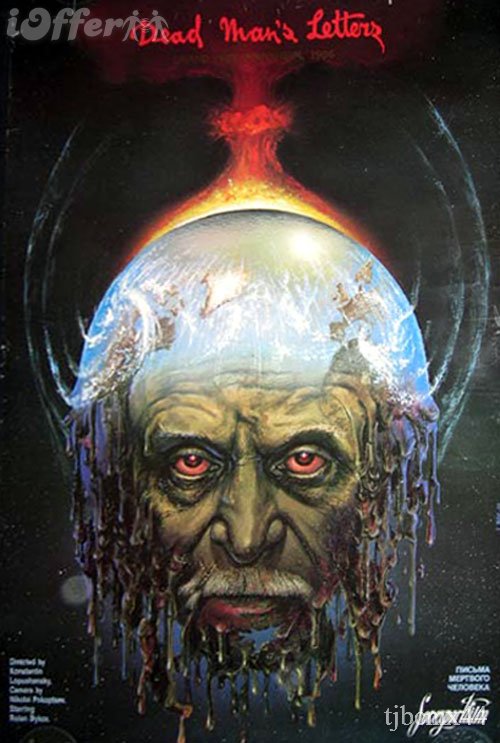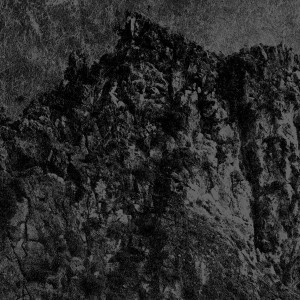Lovecraft art by Francois Launet.
All posts by Indy
Revelation and Deuteronomy
Funeral Mist: Blessed Curse from the Maranatha album (2009).
They scoffed at his feast of love, now they shall be dragged to his table of justice and made to drink their due deserts.*
They scoffed!…at the feast of the Lord and now they will be made to drink of their due deserts. Those of you that are away from God, I’m warning you, there’s coming a time, you would give anything for the cup of salvation, you would give anything to follow in the Lord’s steps and take up your cup and drink it whenever he calls you to do with the Christians; but it’s too late! So you were an angry man on the Earth? I’m an angry god in heaven.
Don’t forget our test tonight, for in the hand of the LORD there is a cup, and the wine is red; it is full of mixture and he poureth out of the same. But the dregs thereof, all the wicked of the earth shall wring them out, and drink them. (Psalm 75:8)
Friends, the judgment. The punishment of the wicked is prepared, God holds it in his hand, in the chalice of his wrath he holds it.
…The wine of the wrath of God which is poured out without mixture into the cup of his indignation and he shall be tormented with fire and brimstone in the presence of the holy angels and the presence of God.** (Revelation 14:10)
Take the wine cup of the fury at my hand, and cause all the nations, to whom I send thee, to drink it. And they shall drink, and be moved, and be mad, because of the sword that I will send among them. Then took I the cup at the LORD’s hand, and made all the nations to drink, unto whom the LORD had sent me. (Jeremiah 25:15-17)
Cursed shall be the fruit of thy body,
And cursed shall be the fruit of thy land,
Cursed shalt thou be when thou comest in,
And cursed shalt thou be when thou goest out. (Deuteronomy 28:18-19)
I gave you everything —-. He will force you as a parent forces a child to take medicine, he’s gonna force you to take the cup of the Lord…The wine is red! That signifies, my friends, the retribution! The payment! Vengeance! Blood for blood!
And thou shalt grope at noon-day, as the blind gropeth in darkness,
And thou shalt not prosper in thy ways:
And thou shalt be only oppressed and spoiled evermore,
And no man shall save thee. (Deuteronomy 28:29)
The stranger that is within thee shall get up above thee very high;
And thou shalt come down very low.
He shall be the head, and thou shalt be the tail. (Deuteronomy 28:43-44)
And thy heaven that is over thy head shall be brass,
And the earth that is under thee shall be iron.
The LORD shall make the rain of thy land powder and dust:
From heaven shall it come down upon thee,
Until thou be destroyed (Deuteronomy 28:23-24)
You’ll cry! You’ll cough! You’ll choke! And you will be…trapped. You’ll see the dregs, you’ll see the bottom of the cup, you’ll see the soupy mixture but you’ll keep drinking it and drinking it and drinking it and drinking it; my friends, Hell is forever! Damnation is forever!
It’s not a day in Hell, it’s eternity. When the Rapture takes place all hell is gonna explode. Then you will be within the sodomite hordes, when the Rapture takes place, you will not make it…you’re not going up. Why? You made a choice. You made a choice. It’s a horrible tempest! This shall be the cup, the portent of their cup. Death! Every last sin —. Don’t hold back at me; ‘cause when you hold back, friend, you’re dropping into the cup, it’s being stored up. And you will be forced to drink it, it will stand over you. And judge you.
The LORD shall make the pestilence cleave unto thee,
Until he have consumed thee from off the land,
Whither thou goest to possess it.
The LORD shall smite thee with a consumption,
And with a fever; and with an inflammation and with an extreme burning,
And with the sword, and with blasting, and with mildew;
And they shall pursue thee until thou perish,
Because thou wouldest not obey the voice of the LORD thy God. (Deuteronomy 28:21-22, 62)
— It sayeth in the — saying with a loud voice: If any man worship the beast and his image, and receive his mark in his forehead, or his hand, the same shall drink of the cup… (Revelation 14:9-10) …It is full of mixture, and this represents, friends: spices of anger, justice and repeated rejections of mercy. How many times has God tried to warn you?
You’re mixing the cup! You’re the ones dropping every ingredient in! You’ve stirred up wrath! And if you don’t believe what I’m speaking then you read the word! You’ve mixed his wrath! And it’s poisonous. It’s not the church that is causing the wrath to come down, it’s you! Drink it! Drink it! Not only will you have no choice, you’ll never reach the —.
You won’t — to do it. He will —-
—
*The first four paragraphs of the sample are partly from the exposition by Charles H. Spurgeon of Psalm 75:8 in the book The Treasury of David.
** It’s “presence of the Lamb” in the original verse.
—
All the dirty work done by Aceres, used with kind permission. Thank you!
Betraying the call of continued creation
Here, in fact, we may be in the presence of one of the most necessary of all Devils: the Ecumenical Unifier, champion of all efforts to remove invidious distinctions between nature and nurture, body and spirit, interdiction and impulse, time and eternity, individual and community, male and female, Hell and Heaven – and ultimately, of course, between man and God.
With their appearance on the Crushing the Holy Trinity compilation (2005), Poland’s Mgla established themselves as one of the most interesting bands around. Seven years later they are at the forefront of music. Groza was the best black metal album of 2008, and With Hearts Toward None has been on almost constant repeat in my world since its’ release seven months ago.
I’ll be in Berlin on October 10th at the Fog Over Berlin fest featuring Mgla, Furia, Blaze of Perdition and Mordhell – the Polish invasion of Germany! A revaluation of values, sort of.
And as the light embraces the wanderer,
as knees bend, as thought is obliterated,
with the very moment that resistance has ceased,
now, I am become death, the enemy of man.Let the children drink freely
from these rivers of grace
And let there come the rain,
let there come the rain
And may it wash away the scum, the cunts, the dogs, the filth, the shit, the whores, the junk, the trash, the worms, the freaks, the rot, the plague, the grime, the smut, the waste, the pigs, the slime, the mud, the vermin of every shape and size…No golden thrones to follow
No shrines of solace to be found
And only the locusts shall sing
at the end of the day
Beyond the Black Rainbow
I just saw a movie that was right up my alley (thanks for the tip, Claudio Marino!). I won’t tell you much about it, I think it’s better that way. What you need to know is that Beyond the Black Rainbow is a psychotronic kind of movie, where plot isn’t as important as aesthetics. This thing is beautiful! Along with the dark and brooding soundtrack (the main theme is obviously inspired by the masters: Goblin) it strives for perfection in the genre. Of course it has its’ flaws, but if you’re in the right mood: Crank up the volume and turn off the lights and this beast will hold you spellbound for almost two hours straight.
I feel the same vibe in movies like Inland Empire, The Limits of Control, Valhalla Rising, Eraserhead, Amer and maybe even Stalker, 2001: A Space Odyssey and some Cronenberg flicks. If you like that stuff, you’ll hopefully dig this one too.
Op-Docs: The Program
Why isn’t this all over the news? What’s all this shit focus on Julian Assange (and not on WikiLeaks)?
Videos like these keep spreading on Twitter and other social media, but as long as it’s only there and not on major television, most people will dismiss news like this as “conspiratory”.
Well, now it’s in the New York Times. Will people react? Probably not. We are too distracted by idiocy.
The Holy Mountain – Part One
Alejando Jodorowsky‘s The Holy Mountain (1973) is one of my all time favourites. It’s about symbolism, mainly focused on spirituality and the occult, death, rebirth, mysticism and the extramundane, but also on capitalist production, militarism and the absurd. The visual vocabulary is unique and absolutely stunning. Press pause in any frame at any time throughout the whole film, and you will get an image that constitutes the most amazing art. After all, Jodorowsky was trying with all his soul to make a sacred film. He wanted to change mankind with it, make it a source of enlightenment for the audience, and he believed that cinema was better than LSD…
The Holy Mountain has certainly changed me and the way I look at things, and most importantly the way I look at movies. In my eyes, this is pure gold/excrements. It operates on so many levels and is filled with so much detail, I believe you need to experience it several times to grasp its universal themes. Knowledge of the occult, religion and its’ most basic symbols is essential for understanding. Sometimes it comes out deep as fuck, and sometimes it does not (to put it simply, haha!)… That’s what I love with this piece of art: It rules even when it sucks!
These posts are based on Jodorowsky’s commentary track for the Anchor Bay DVD edition, as well as the book The Spiritual Journey of Alejandro Jodorowsky. You may want to watch the movie while you read this text, and hopefully, a deeper kind of understanding will emerge on your highway to hell/nirvana or whatever you may fancy.
Here are the first three minutes of the film, as explained by Jodorowsky in the commentary track:
First, a set decorated without furniture. It’s clean, like a hospital, with crosses on the wall to convey a sense of mysticism. There are only essential objects, like a sacred ceremony. The master’s outfit conceals his face. He hides his face, like Mohammed. He is an essential being, without ego.
These are the actual movements of a Japanese tea ceremony. All the movements are conscious.
These two girls weren’t actresses. They wanted to have a spiritual experience. They were searching for their own truth, their naked truth.
[the camera sweeps across different images]
The inner God that opens in circles towards a greater consciousness.
A heart that opens towards a greater consciousness.
The target that the arrow must hit.
The eye of Buddha.
The pearl, the soul that must be polished.
When the door is opened, a key is found with the trilogy.
Now, descend into the world of the dead, to the world of the dreamless dreams.
Descending…
Butterfly wings symbolize metamorphosis.
Back up through the serpent, Kundalini… the pearls of Eros, until it arrives at a geometric figure, which is the interior consciousness.
After this three minute introduction filled to the brim with symbols of the occult, we meet the protagonist, the Christ like figure, the Thief, lying on the ground, and who through the course of the film will experience moments of enlightenment. Jodorowsky continues:
He’s ”The Fool” of the tarot. His face is covered with flies, symbolizing useless thoughts. He is urinating on himself. He’s drunk and lost. This is the card that defines him, the tarot’s Fool card. The Fool is always represented by an animal that is his ego. The frog is the ego.
To be continued in Part Two.
Great movies of the 80’s: Letters From A Dead Man
There are two movies on my Worship Deluxe List: Apocalypse Now (1979, Francis Ford Coppola) and Stalker (1979, Andrej Tarkovskij). These are movies that deal with life, death and the unfathomable power of consciousness, spiritual enlightenment, turbulence and confusion. They work on so many levels, using cinematography and psychology in such subliminal ways it’s almost an hallucinatory experience watching them.
Having endured Konstantin Lopushansky‘s Pisma Myortvogo Cheloveka (Letters From A Dead Man aka Dead Man’s Letters (1986)), I might add it to the list. Lopushansky apparently worked with Tarkovskij on Stalker as a production assistant, and here he takes it to the next level: Nuclear winter, death and dying. It’s release coincided quite well with the Chernobyl distaster…
This is by far the most realistic post-apocalyptic vision I have ever experienced (alongside Threads, that is). It’s severely dark, haunting, and utterly depressing, and the screen is literally glowing of nuclear waste. There are no Mad Max haircuts in this one. It’s not funny or cool. It’s about emotional disintegration and the total resignation of life.
Almost all of existence above ground is wiped out. The environment is toxic. A few survivors finds a home in a bunker, and a physicist writes letters in his mind to his young son who went missing during the chaos. His wife is dying from radiation sickness. The days are as black as night, and the few remaining souls are contemplating death.
If you are a bit like me, you will contemplate what life really is after having watched this one.

The rest of this post is kind of spoiler-like, so you might wanna consider stop reading here.
There are so many memorable scenes, both beautiful, moving and disturbing. The one that really got me is when a survivor praises the achievements of humanity, and then commits suicide.
An absolute masterpiece.
All evidence suggests that the history of mankind has ended. It is time to sum up the outcome, and I think it should be done calmly, without vulgar affectation.
Today I want to talk to you like a dead man to other dead men. That is – frankly.
Let me present to you a speech for human beings as biological species.Mankind was a tragic species, doomed perhaps from the very beginning. Our fatal and beautiful fate was to always attempt to bite off more than we can chew, be better than nature intended. We found a place in ourselves for compassion, even though it was conflicting with the law of survival. We managed to feel self-respect, even if it was always trampled on. We created art masterpieces, comprehending their uselessness and frailness. We found in ourselves the ability to love. Oh Lord, it was so difficult! For inexorable time caused our bodies, thoughts and senses to decay.
But man continued to love. And love created art, an art which reflects our unbearable yearning for perfection, our immense despair and our endless cry of terror, a howl of desolate thinking creatures in the cold and impassive space desert.
In this room, a lot of hateful words had been said about mankind, contemptous and scornful. But I won’t throw a stone at it today. That is what I say: I loved mankind. I love it even better now that it no longer exists. I love it for its tragic fate. And I want to say to you, colleagues, I want to say that I love you. Perhaps that is my leap of consciousness, but I wanted you to know.
Now I will go to my room and everything will end for me.
After all, we are all adults, and death is not a frightening thing when everything has died.
——————
OTHER GREAT MOVIES OF THE 80’s:
Manhunter (1986)
A Short Film About Killing (1988)
Threads (1984)
The Quiet Earth (1985)
The Thing (1982)
The Plague Dogs (1982)
Altered States (1980)




















